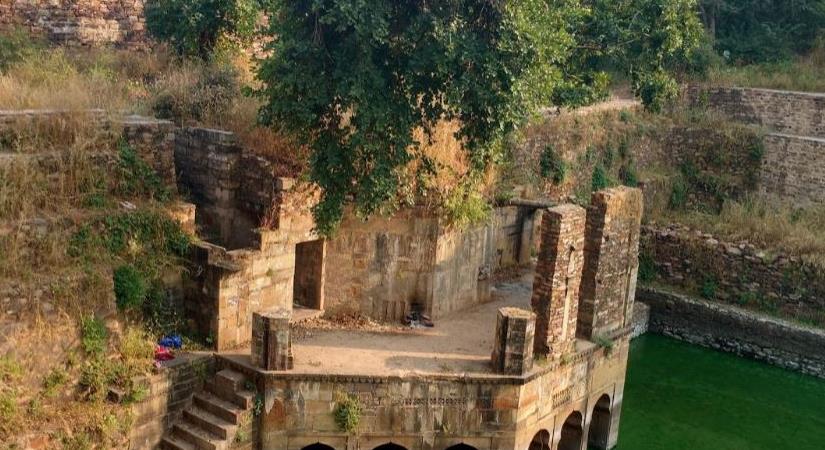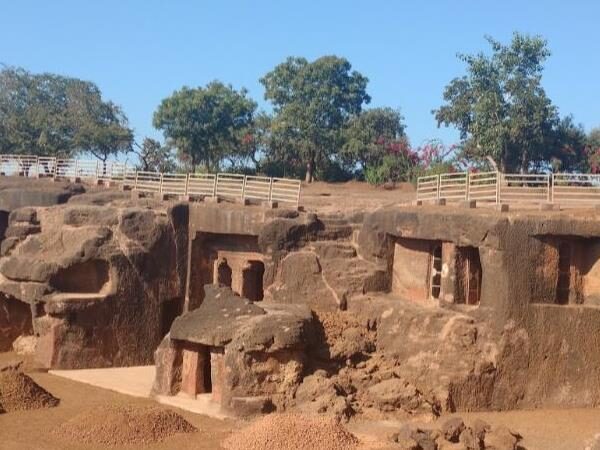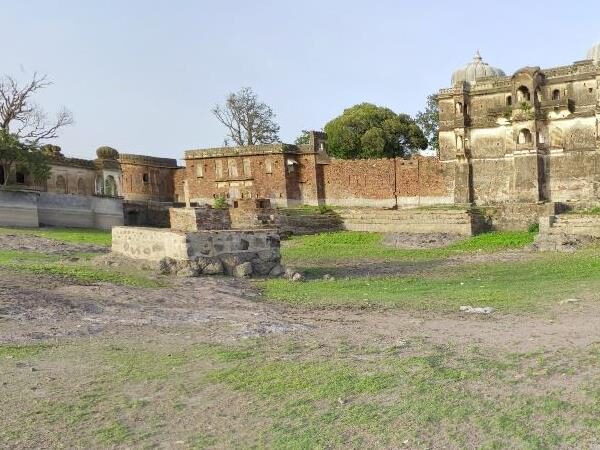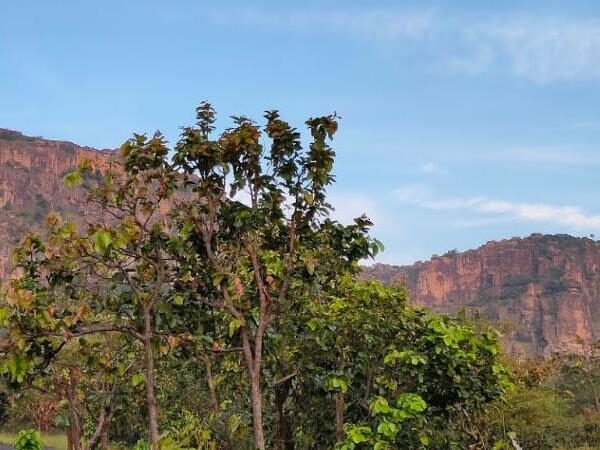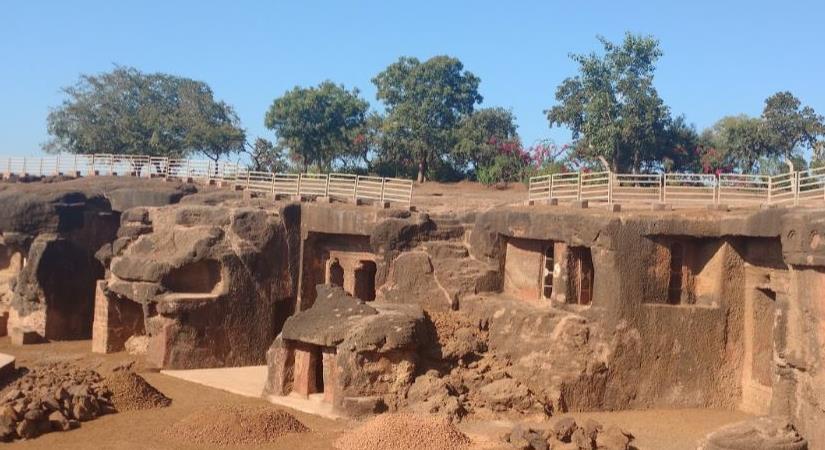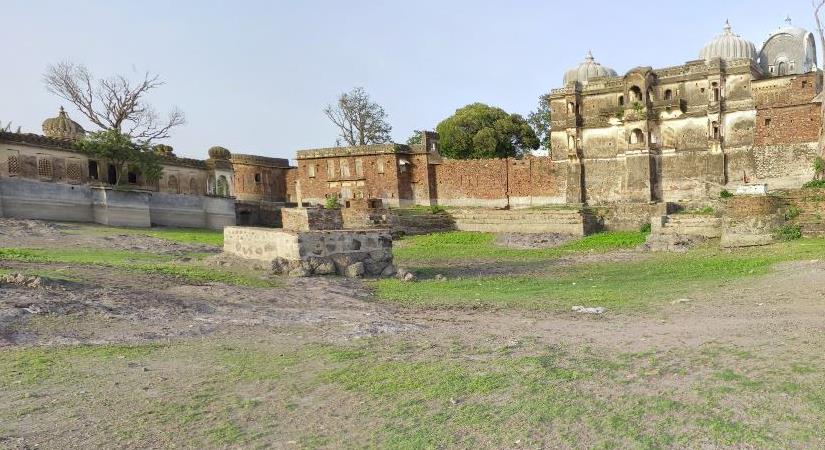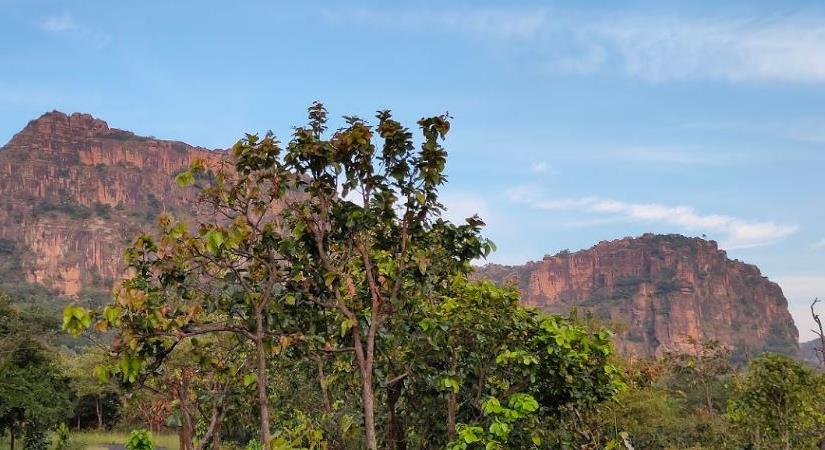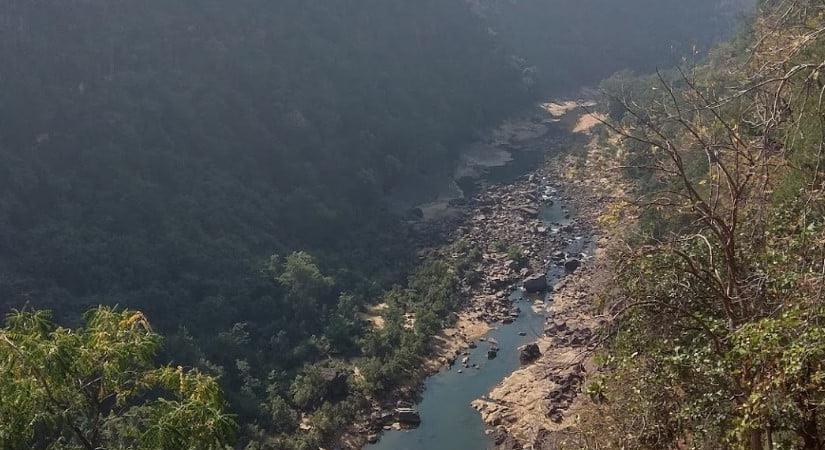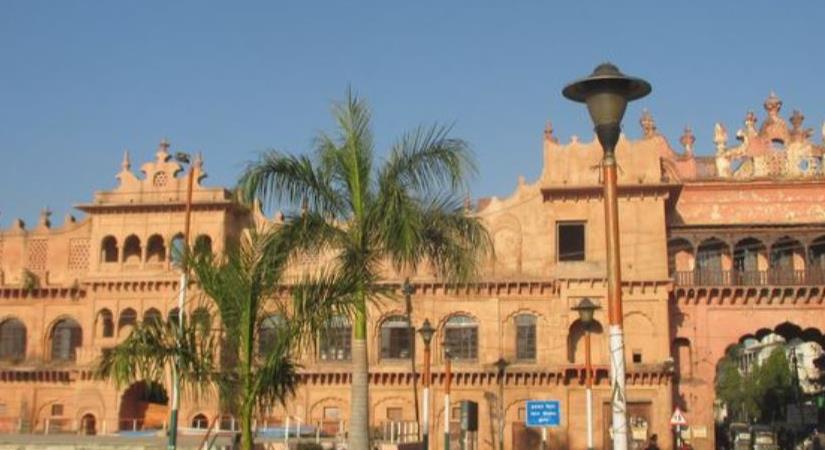An inscription discovered from Talanpur (around 100 km from Mandu) states that a merchant named Chandra Simha installed a statue in a temple of Parshvanatha located in the Mandapa Durg. While “Durg” means “Fort”, the word “Mandu” is a Prakrit corruption of “mandapa”, meaning “hall, temple”. The inscription is dated 612 VS (555 CE), which indicates that Mandu was a flourishing town in 6th century.
Mandu gained prominence in 10th and 11th century under the Paramaras. The town of Mandu, situated at an elevation of 633 metres (2,079 feet), is perched on the Vindhya Range extending for 13 km (8.1 mi) while overlooking the plateau of Malwa to the north and the valley of the Narmada River to the south which acted as natural defences for the fort-capital the Paramaras. As “Mandapa-Durga”, Mandu is mentioned as the royal residence in the inscriptions of the Paramara kings starting from Jayavarman II. It is possible that Jayavarman or his predecessor Jaitugi moved from the traditional Paramara capital Dhara to Mandu, because of attacks from the neighbouring kingdoms. Balban, the general of the Delhi’s Sultan Nasir-ud-din, had reached the northern frontier of the Paramara territory by this time. Around the same time, the Paramaras also faced attacks from the Yadava king Krishna of Deogiri and the Vaghela king Visaladeva of Gujarat. Compared to Dhara, which is located in the plains, the hilly area of Mandu would have offered a better defensive position.
In 1305, the Muslim Sultan of Delhi Alauddin Khalji captured Malwa, the Paramara territory. Ayn al-Mulk Multani, the newly appointed Governor of Malwa, was sent to expel the Paramara king Mahalakadeva from Mandu and cleanse that place from “the odour of infidelity”. With the help of a spy, Multani’s forces found a way to enter the fort secretly. Mahalakadeva was killed while attempting to flee, on 24 November 1305.
When Timur captured Delhi in 1401, the Afghan Dilawar Khan, governor of Malwa, set up his own little kingdom and the Ghuri dynasty was established,[7][unreliable source?] His son, Hoshang Shah, shifted the capital from Dhar to Mandu and raised it to its greatest splendour. His son and third and last ruler of Ghuri dynasty, Mohammed, ruled for just one year till his poisoning by the militaristic Mohammed Khalji.[citation needed]
Mohammed Khalji established the Khalji dynasty of Malwa (1436-1531) and went on to rule for the next 33 years. However, it was under his reign that the Malwa Sultanate reached its greatest height.[8] He was succeeded by his son, Ghiyas-ud-din, in 1469 and ruled for the next 31 years. He had a large harem and built the Jahaz Mahal for housing the women, numbering thousands.[citation needed] Ghiyas-ud-din was poisoned at age 80, by Nasir-ud-din, his son.[citation needed] In 1526, Mahmud II the sixth Khalji ruler made no resistance against the invading Bahadur Shah of Gujarat who conquered Mandu 28 March 1531. In 1530 Humayun, the second Mughal Emperor, succeeded Babur. Babur had established the Mughal dynasty. Humayun had two major rivals: Bahadur Shah of Gujarat and Sher Shah Suri. Humayun was engaged in a war with Sher Shah Suri when he learned of an imminent attack by Bahadur Shah of Gujarat who was being aided by the Portuguese. With an unusual swiftness Humayun attacked and defeated Bahadur Shah. Thus in 1534 Mandu came under Humayun’s rule and he ordered large scale massacre of prisoners there.[9] Humayun fancied Mandu so he relaxed here for a brief, peaceful interlude[10][full citation needed] Humayun lost the kingdom to Mallu Khan, an officer of the Khalji dynasty. Ten more years of feuds and invasions followed and in the end Baz Bahadur emerged on top.
By this time Humayun had been defeated by Sher Shah Suri and had fled India. Sher Shah Suri died in 1545 and his son Islam Shah died in 1553. Islam Shah’s 12-year-old son Feroz Khan became the king but was killed by Adil Shah Suri within 3 days. Adil Shah appointed Hemu, also known as ‘Hemof Army and Prime Minister. Hemu had a rapid rise during Sur regime. A grain supplier to Sher Shah Suri’s army and then Chief of Intelligence or Daroga-i-Chowki (Superintendent of Post) under Islam Shah, he became the Prime Minister and Commander-in-Chief of the Afghan Army (Sher Shah Suri’s army) under the reign of Adil Shah Suri. Adil Shah Suri was an incompetent ruler and many rebellions occurred against his rule. Hemu was sent to quell these rebellions. During this period Hemu attacked Mandu also and Baz Bahadur ran away from Mandu. Hemu appointed his own Governor here. During this period Humayun had returned to India and in 1555 was again the emperor. In 1556 Humayun died after falling while descending a staircase.
Hemu was in Bengal at the time and sensing an opportunity attacked Mughals. Soon Agra, Bihar, Eastern UP, Madhya Pradesh were all won and on 6 October 1556, he won Delhi, defeating Akbar’s forces, and had his coronation at Purana Quila, the next day. Akbar defeated and killed Hemu in the second Battle of Panipat on 7 November 1556. In 1561, Akbar’s army led by Adham Khan and Pir Muhammad Khan attacked Malwa and defeated Baz Bahadur in the battle of Sarangpur on 29 March 1561. One of the reasons for Adham Khan’s attack seems to be his love for Rani Roopmati. Rani Roopmati poisoned herself to death on hearing the news of fall of Mandu. Baz Bahadur fled[11][better source needed] to Khandesh. Akbar, soon recalled Adham Khan and made over command to Pir Muhammad. Pir Muhammad attacked Khandesh and proceeded up to Burhanpur but he was defeated by a coalition of three powers: Miran Mubarak Shah II of Khandesh, Tufal Khan of Berar and Baz Bahadur. Pir Muhammad died while retreating. The confederate army pursued the Mughals and drove them out of Malwa. Baz Bahadur regained his kingdom for a short period. In 1562, Akbar sent another army led by Abdullah Khan, an Uzbeg which finally defeated Baz Bahadur. He fled to Chittor. Baz Bahadur remained a fugitive at a number of courts till he surrendered in November, 1570 to Akbar at Nagaur. He joined Akbar’s service.
After Akbar added Mandu to the Mughal empire, it kept a considerable degree of independence, until taken by the Marathas in 1732 by Peshwa Baji Rao I. The capital of Malwa was then shifted back to Dhar by Marathas under Maharaja Pawar, re-establishing Hindu rule.
